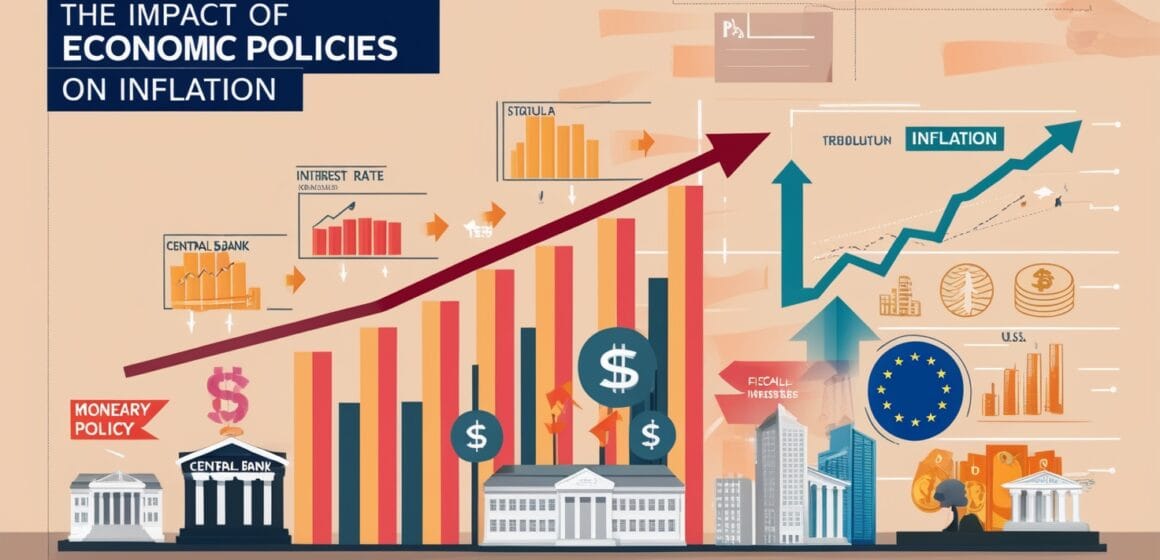Inflation, the sustained increase in the general price level of goods and services, is a critical indicator of economic health. Policymakers around the globe implement economic policies to control inflation, ensuring stability and growth. However, the effects of these policies can be complex and multifaceted. This article explores the impact of recent economic policies on inflation and what it means for consumers, businesses, and governments.
Understanding Inflation and Its Drivers
Inflation can arise from various factors:
- Demand-Pull Inflation: Occurs when demand outpaces supply, leading to higher prices.
- Cost-Push Inflation: Results from rising production costs, such as wages and raw materials.
- Built-In Inflation: Driven by expectations of future price increases, leading to a self-fulfilling cycle.
Central banks and governments use tools such as monetary policy, fiscal policy, and regulatory measures to influence these factors and maintain inflation within a target range.
Recent Economic Policies and Their Implications
1. Monetary Policy Tightening
In response to rising inflation, central banks often increase interest rates to reduce money supply and curb demand. For example:
- Higher Interest Rates: Encourage saving over spending, reducing consumer demand.
- Reduced Liquidity: Discourages borrowing by businesses, potentially slowing investment and production.
Impact on Inflation: While higher interest rates can lower inflation by cooling demand, they may also slow economic growth and increase unemployment. The balance between controlling inflation and sustaining growth is a delicate one.
2. Fiscal Stimulus and Spending
Governments may introduce stimulus packages to boost economic activity during downturns. However, excessive fiscal spending can lead to demand-pull inflation by increasing aggregate demand.
Recent Examples:
- Post-pandemic recovery packages aimed at revitalizing economies.
- Infrastructure investments to create jobs and stimulate growth.
Impact on Inflation: While fiscal stimulus can support economic recovery, it risks overheating the economy if not aligned with supply-side capabilities.
3. Supply-Side Interventions
Policymakers are increasingly focusing on supply-side measures to combat inflation. These include:
- Reducing Import Tariffs: To lower costs of goods.
- Incentivizing Production: Subsidies or tax breaks to boost domestic production.
Impact on Inflation: Supply-side policies can alleviate cost-push inflation but may take longer to show results compared to demand-side measures.
Global Case Studies
United States
The Federal Reserve’s aggressive interest rate hikes in 2023 have helped lower inflation but at the cost of slowing economic growth. Consumer confidence remains cautious as borrowing costs rise.
European Union
The European Central Bank’s measures to stabilize energy prices, coupled with monetary tightening, have helped mitigate inflation caused by geopolitical tensions.
India
India’s combination of targeted fiscal measures and monetary tightening has controlled inflation without significantly hampering growth, showcasing a balanced approach.
Challenges and Risks
- Lag Effect: Economic policies take time to impact inflation, creating uncertainty about their effectiveness.
- External Shocks: Geopolitical events, natural disasters, or global supply chain disruptions can undermine policy measures.
- Stagflation Risk: Over-tightening monetary policies may lead to a stagnant economy with persistent inflation.
Conclusion
The interplay between economic policies and inflation underscores the complexity of maintaining economic stability. Policymakers must navigate a fine line between controlling inflation and sustaining growth, considering both short-term impacts and long-term consequences. For consumers and businesses, understanding these dynamics is essential for making informed decisions in an evolving economic landscape.




Leave a Reply